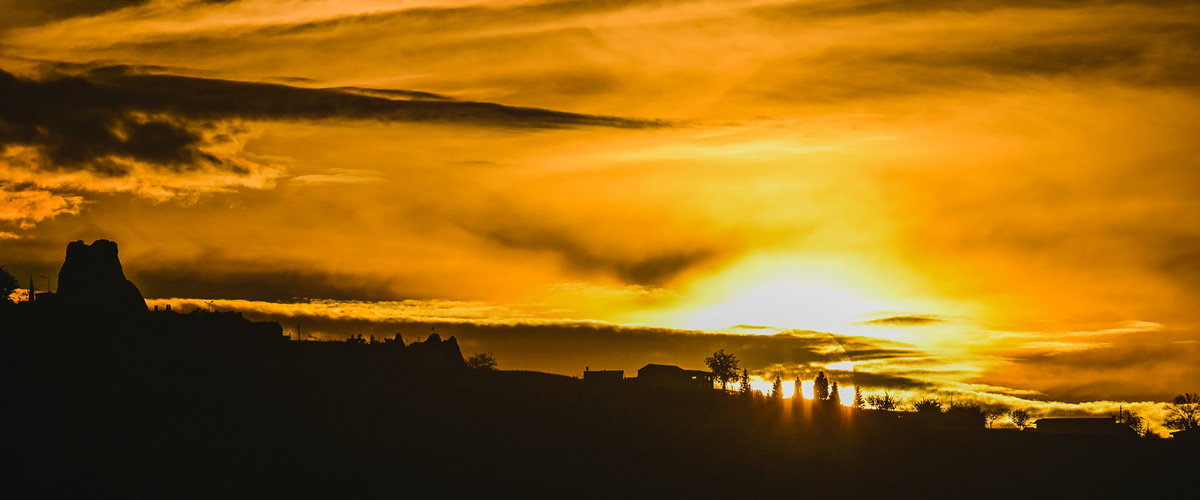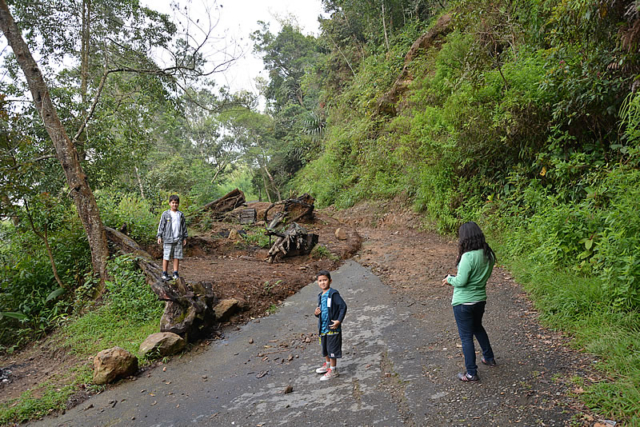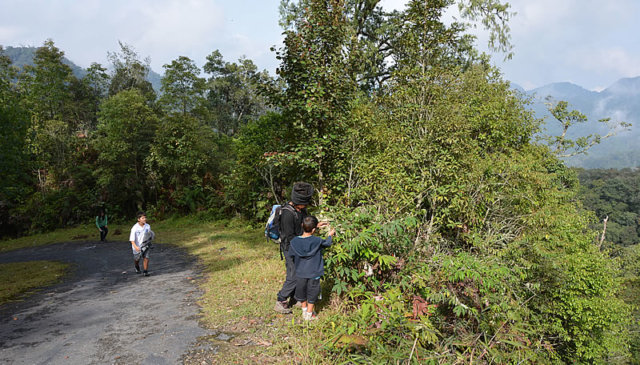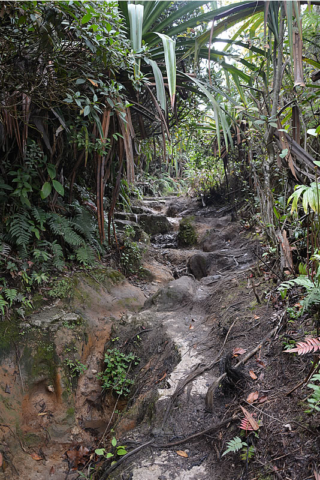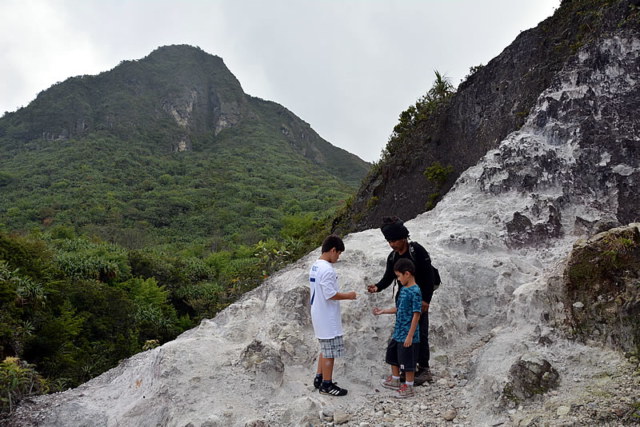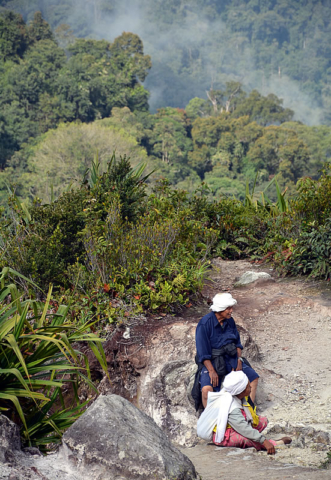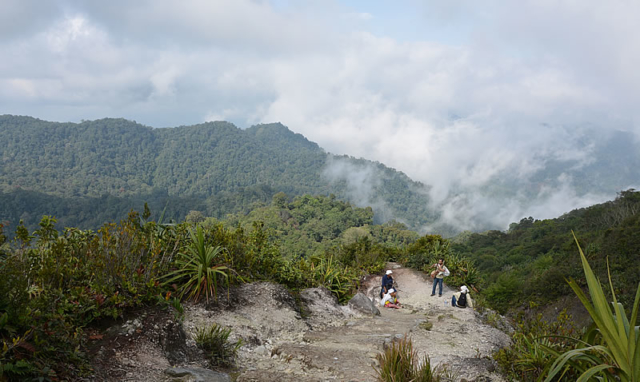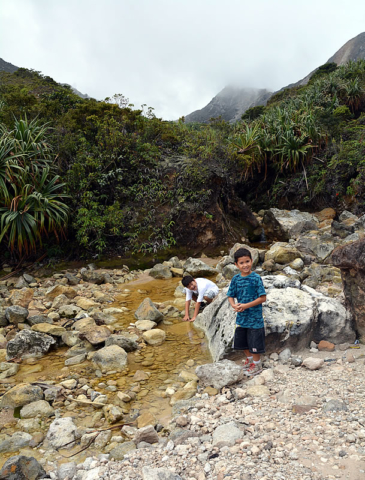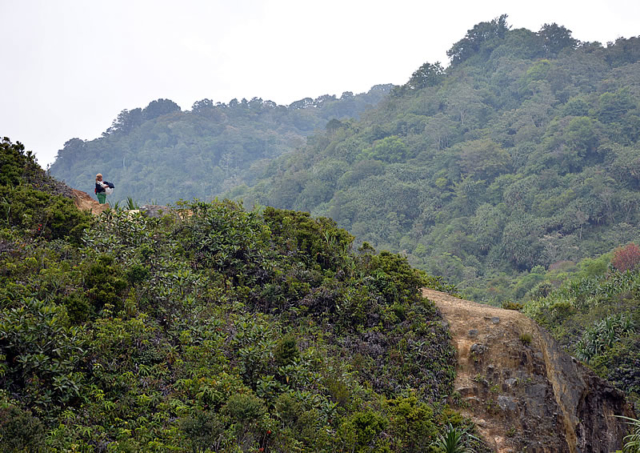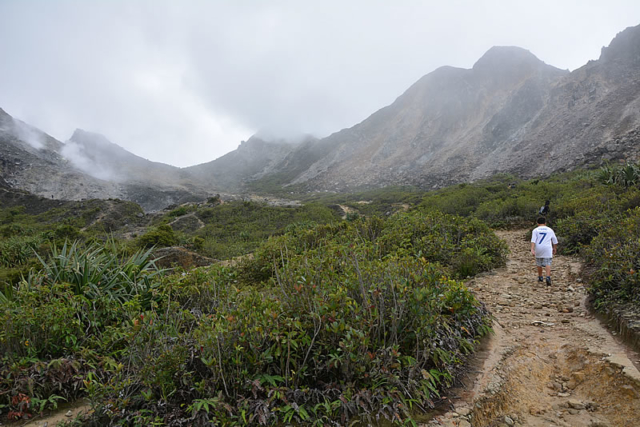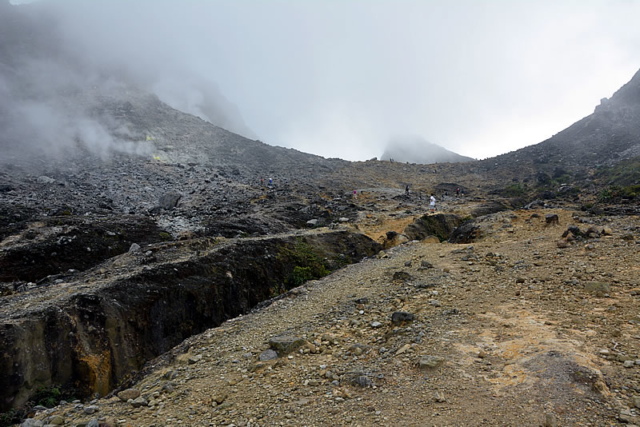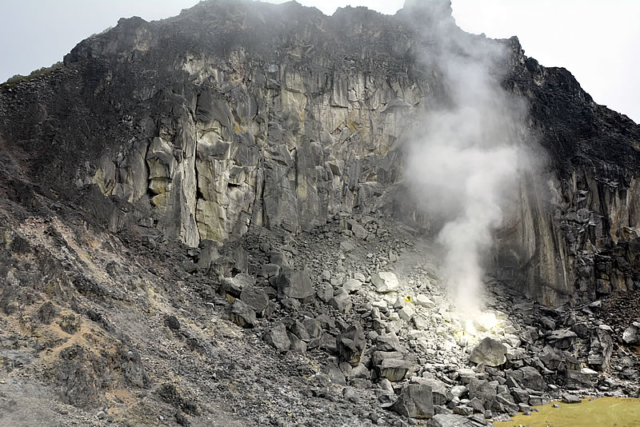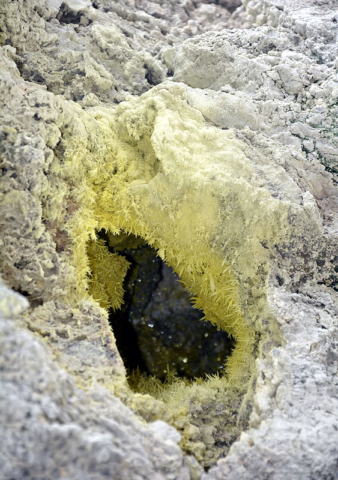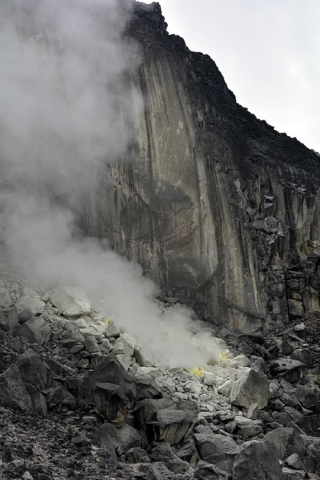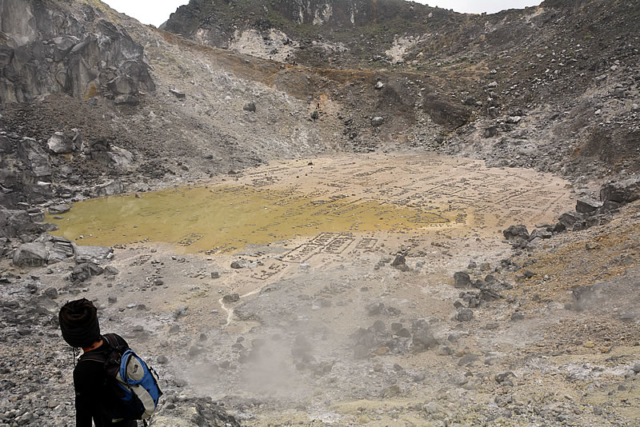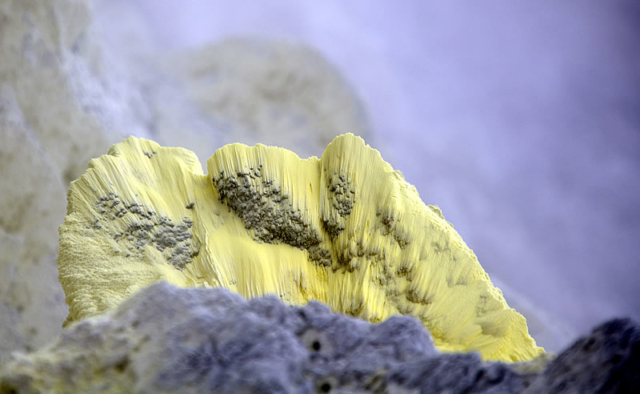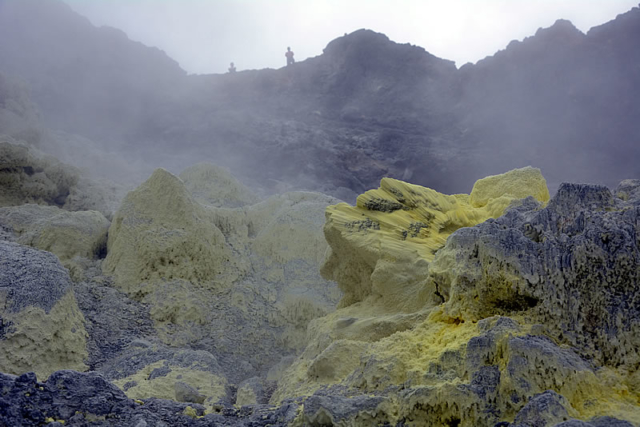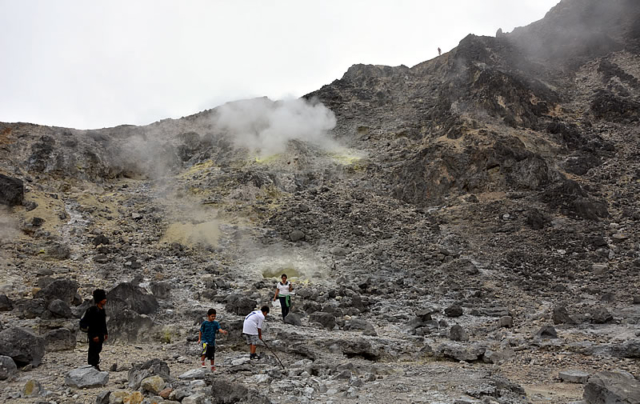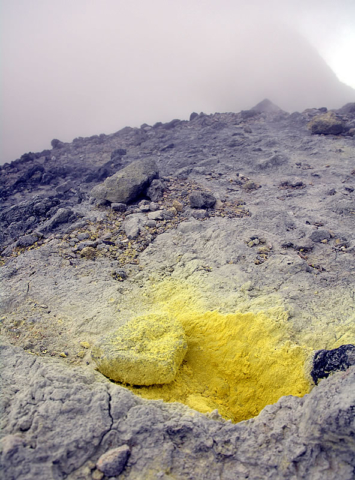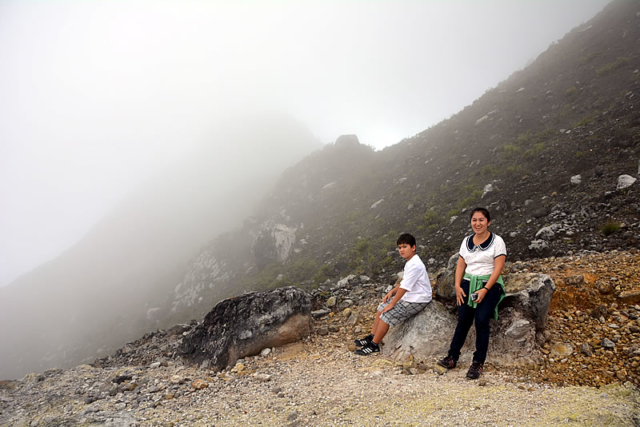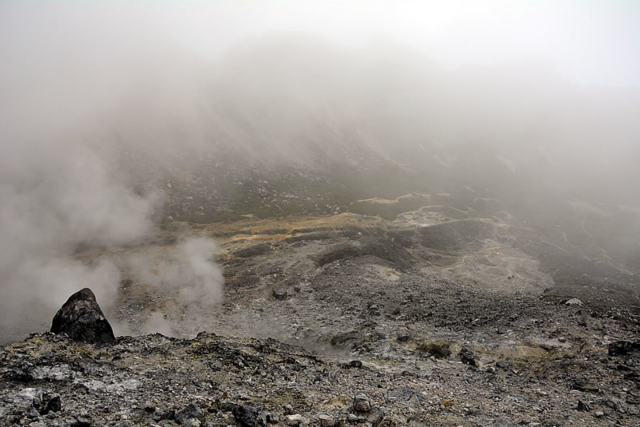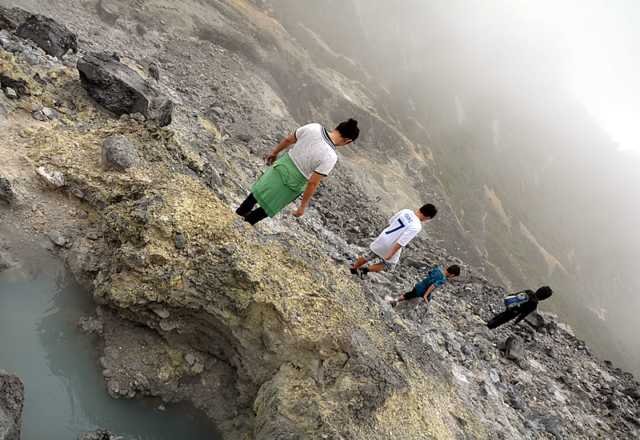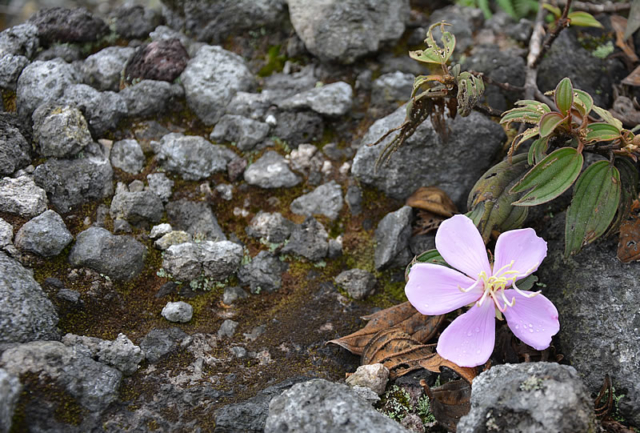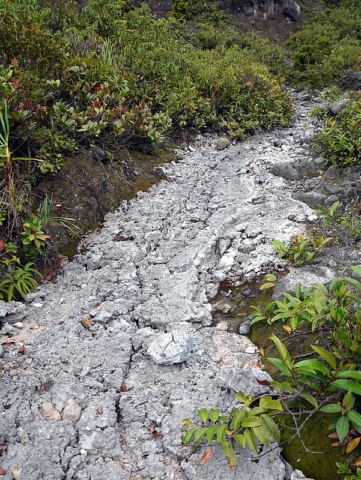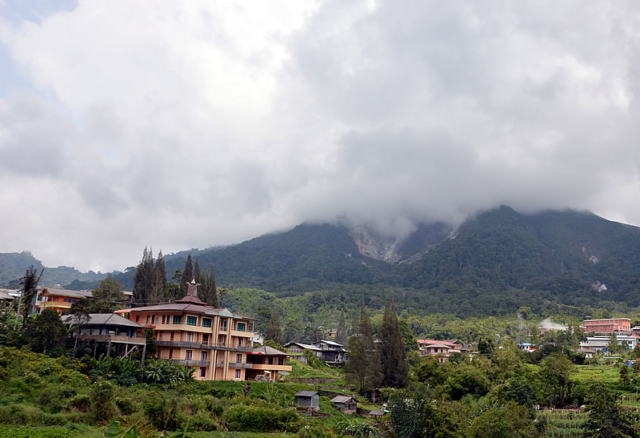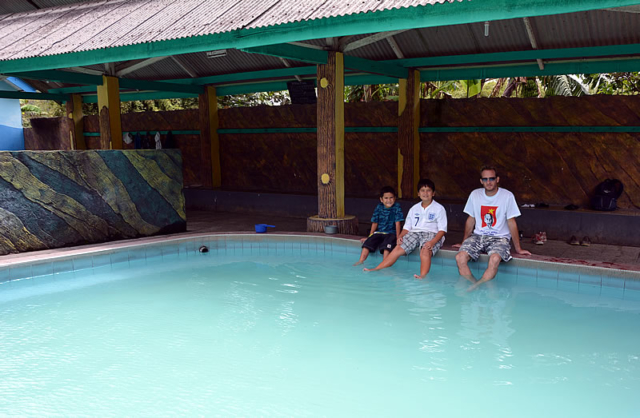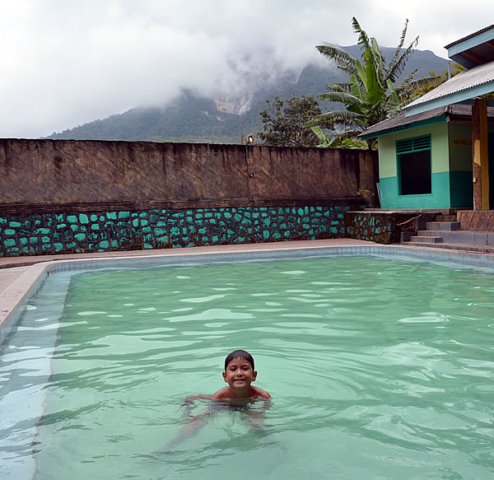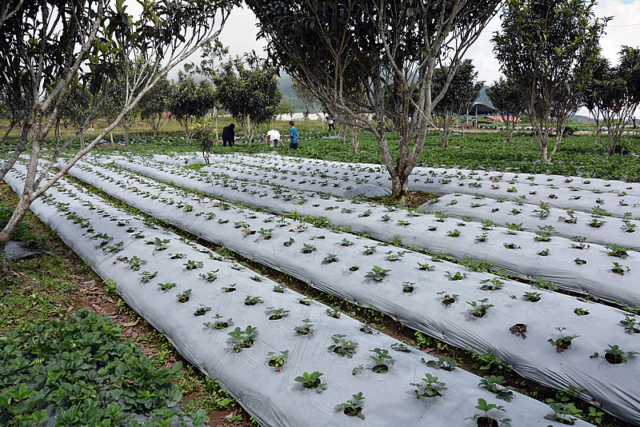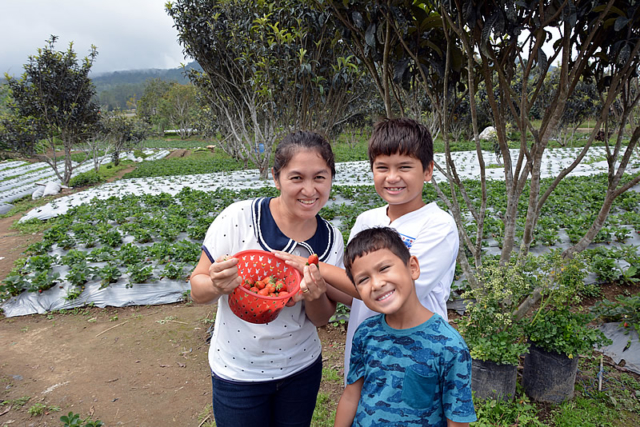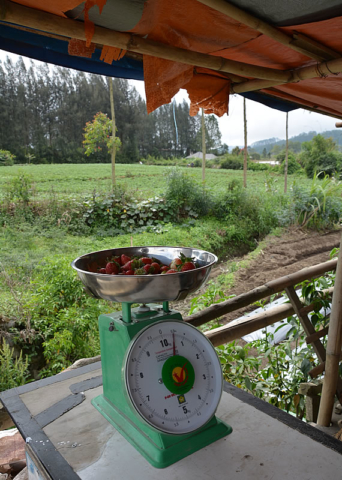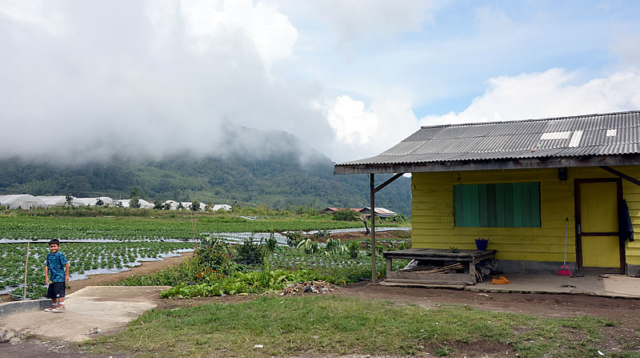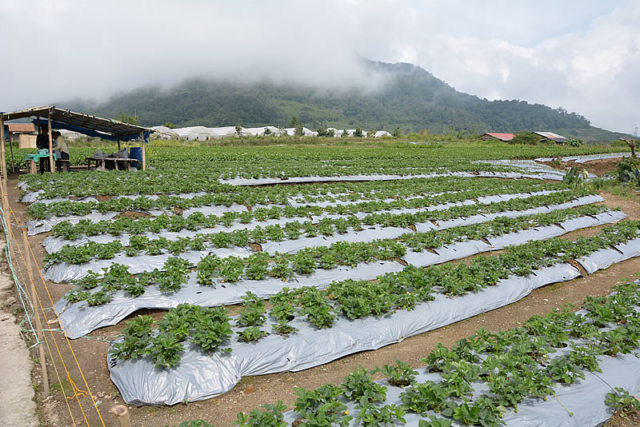At 1300 meters above sea level Berastagi was cold to say the least, and our reason for venturing up here was a geological one, the two active volcanoes of Sinabung and Sibayak. I’ve always wanted to climb an active volcano and this was the chance. Sinabung was off limits since it erupted last month causing the evacuation of 15,000 people, better to take the safer option of Gunung Sibayak.
Our guide collected us at 07.30 and we took his battered minivan to the base of the volcano to begin the trek. It is possible to do this alone but the trails were unmarked and the weather on the mountain very unpredictable so we didn’t take the risk with the kids. I’m not sure whether Dr Smiley (www.drsmiley-sumatra.com) was actually a doctor but he was very friendly and knowledgeable nonetheless, he is part of the Batak tribe, an indigenous group of originally cannibalistic people that settled around Lake Toba and lived in isolation for centuries.
The climb is a relatively easy one and we were surrounded by pungent sulfurous clouds and gurgling pools within about an hour. We reached the rim of the crater and peered over to discover that you could actually climb down into it. Noisy columns of steam vented from bright yellow openings in the rock face, these channels come directly from the belly of the mountain – the whole place feels alive and full of energy.
The weather has slowly started to close in and the clouds reduced the visibility quickly so it was time to grab a few rocks and start the descent. By the time we had reached the base it was sunny again so we stopped off at the hot springs powered by the volcanic steam.
The whole area is a very rich and fertile one and with a cooler climate locals are able to grow all kinds of produce such as carrots, potatoes, cabbage, spring onions, strawberries, and plenty of other stuff seldom seen in the topics. We stopped at a little strawberry farm where you could pick your own … 200km away from the equator!
